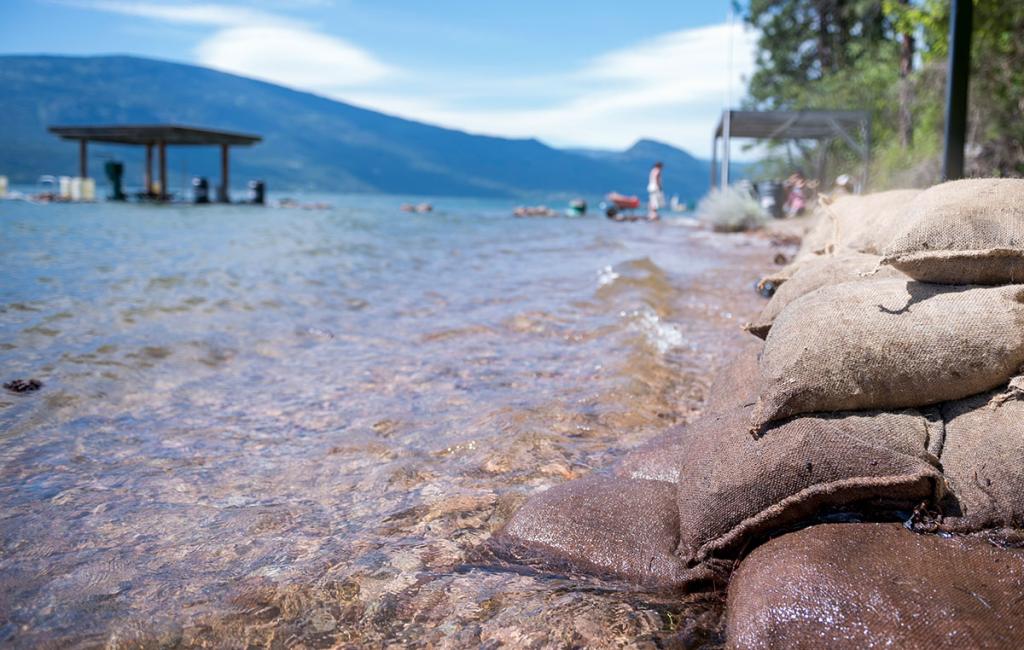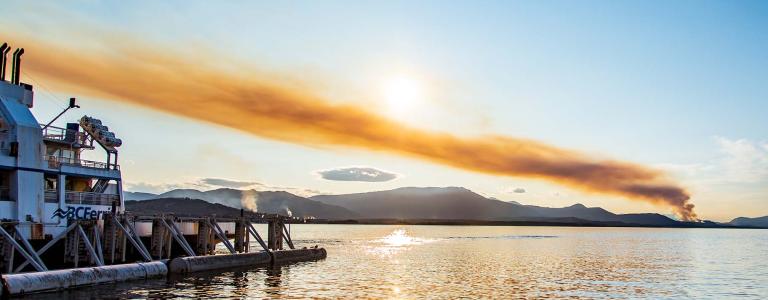The Climate Crisis Is Outpacing B.C.'s Ability to Adapt
British Columbia has become Canada's epicentre of climate change-induced disasters. After historic wildfire seasons in 2021 and 2022, 2023 is now officially the province's most expensive and most destructive wildfire season on record. One of the worst fires, the McDougall Creek fire, forced more than 10,000 people to flee and has damaged or destroyed at least 181 properties in West Kelowna alone. Just a couple of years ago, 619 people died during a week-long heatwave, almost all of them perishing indoors without adequate cooling systems.
Heat waves, wildfires, and floods are costing B.C. up to CAD 17 billion per year—and the actual number is often higher when accounting for disruptions in shipping and supply chains that affect other provinces and territories or the indirect impacts on B.C.'s tourism industry. There are also costs associated with loss of life or deteriorating health, lost income and livelihoods, or the impacts on mental health and cultural heritage that often cannot be quantified in economic terms.
Last week, the province's Ombudsperson released a report highlighting how outdated, under-resourced, and inaccessible B.C.'s disaster and emergency support programs are—particularly for vulnerable people. Simply put, these measures are insufficient to address the impacts of today’s climate crisis.
What needs to change? We must acknowledge the limits of adaptation efforts
The ecological, health, and livelihood losses due to fires and floods are immense—as will be the costs of rebuilding and recovery. The uncomfortable reality is two-fold: 1) we cannot continuously finance disaster recovery, and 2) there are limits to adaptation. Even with sufficient investments into infrastructure upgrades, we will reach a degree of change too large to manage unless we collectively stop emitting greenhouse gases into the atmosphere and the climate stabilizes. The number, intensity, and frequency of extreme weather events will reach a point at which typical adaptation measures like building seawalls and expanding reservoirs simply won’t be enough, causing what the international climate community refers to as "loss and damage."
Loss refers to the complete loss of something, such as a human life or an ecosystem that can’t be brought back. Damage usually refers to infrastructure, for example, a bridge that collapses in a flood despite the fact it was built to more resilient standards. Loss and damage can be profound in both economic and non-economic ways that are beyond what countries, communities, and ecosystems can adapt to. While many might picture hurricane-ravaged island nations or monsoon-drenched shantytowns, the inescapable reality is that loss and damage also looks like what is happening right here, right now, in B.C.
As we reflect on the staggering fiscal and human impacts of climate change, it becomes abundantly clear that we need urgent, transformational change in how we approach climate risks and how we respond to ongoing and future loss and damage.
The federal, provincial, and municipal levels of government have finally started to get serious about climate adaptation—but there's a huge gap in tangible adaptation measures needed right now, let alone acknowledgement of the irreversible effects of loss and damage in B.C.'s current Climate Preparedness and Adaptation Strategy for 2022–2025.
The good news is that this particular strategy is due for an update by 2025. This means we have a window of opportunity to weigh in and ensure our government goes beyond the status quo when it comes to climate adaptation planning.

Coming to terms with the irreversible impacts of climate change: It's time to link climate adaptation and emergency management
One critical piece of the puzzle is better integration of climate change adaptation into emergency preparedness planning, timely and effective humanitarian response, and post-disaster recovery efforts. There is also a need to rapidly address the growing risk of destroyed homes and infrastructure that are not covered by private insurance. This means relocating buildings away from high-risk flood zones, building the capacity of communities, and improving coordination and cooperation around emergency preparedness and management at the regional level.
Local communities and municipalities must receive the tailored support they need to understand the climate risks anticipated for their area and be able to plan accordingly for more intense floods, fires, and heat-related emergencies. However, information alone will not solve the problem: many resource-constrained municipalities will need predictable provincial and federal funding and assistance to help pay for emergency preparedness, disaster response, and required infrastructure upgrades.
Preparing for climate change is complex, and the solutions aren’t always straightforward. But we cannot act with anything less than urgency right now. B.C. is often referred to as a leader on climate change, nationally and globally, and it’s time for the whole government at every level to step up and collectively rise to this challenge.
You might also be interested in
For Nature-Based Solutions to Be Effective, We Need to Work with Indigenous Peoples and Local Communities
Nature-based solutions have been praised as a promising approach to tackling the twin crises of climate change and biodiversity loss. But some Indigenous Peoples and local communities are questioning the legitimacy of the concept and what it symbolizes. It is time to listen to what they have to say.
How Can We Work With Nature to Tackle Drought and Desertification?
Drought is one of the most devastating and pervasive challenges exacerbated by climate change. However, we can work to reduce its effects through nature-based solutions for land restoration and climate-smart agriculture.
The Critical Next Step: What you need to know about Canada’s 2030 climate target
Canada's climate target for 2030 is within reach, but more stringent policies and clearer government communication will be needed to get there. Our expert explains why these developments are critical for Canada to help avoid the worst impacts of climate change.
IISD Annual Report 2023–2024
While IISD's reputation as a convenor, a trusted thought leader, and a go-to source on key issues within the sustainable development field is stronger than ever, the work happening outside the spotlight is just as valuable.
